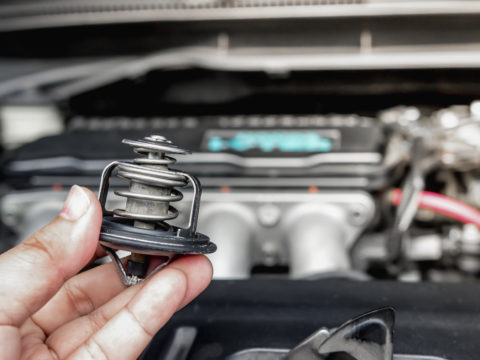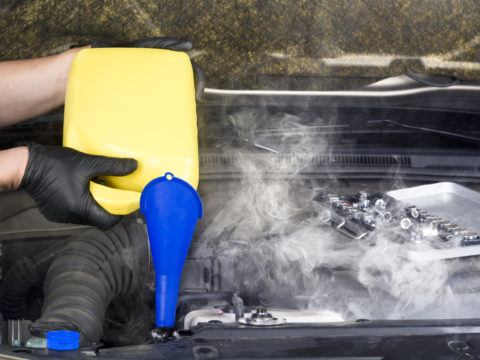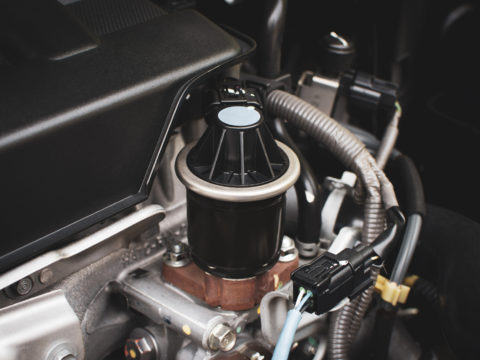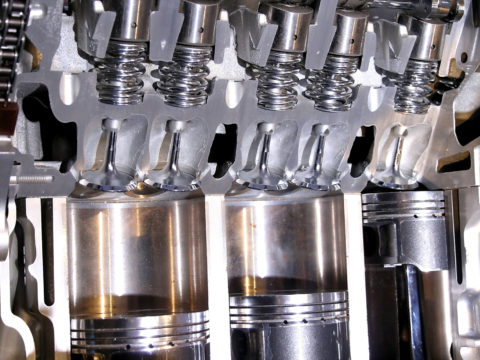The LS6 motor from Chevrolet is a powerful motor in American automotive history. If you’re hanging around with car guys discussing GM cars from the 2000s, you’ll hear about the LS6 whenever they mention some of the most powerful GMs of that era.
Keep reading if you want to understand why it’s famous and influential and why it’s still sought after to this day.
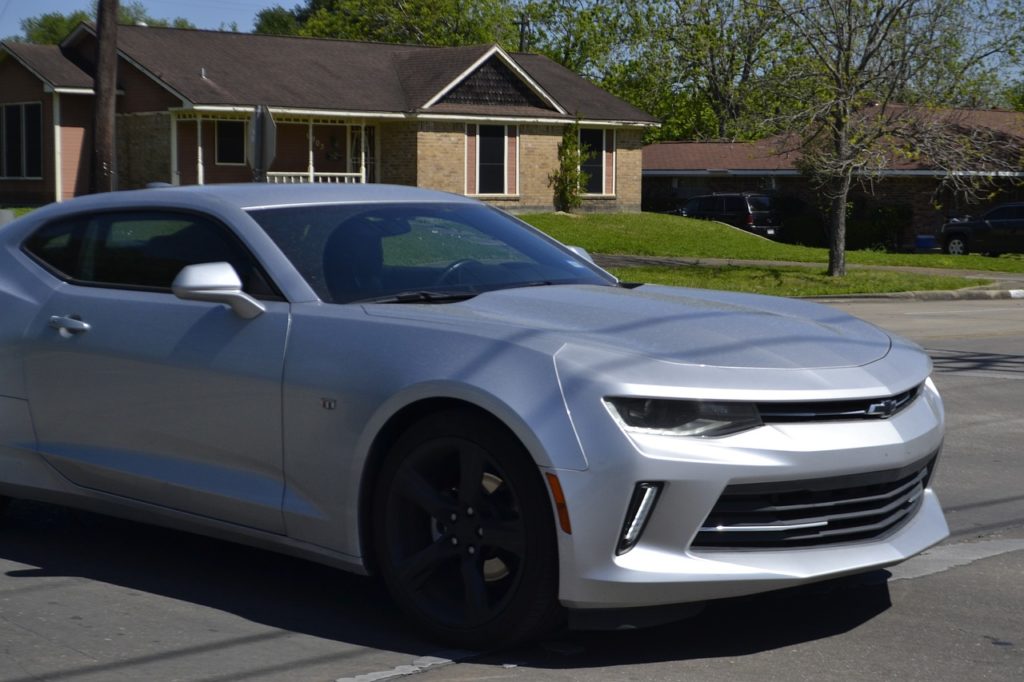
Contents
What is an LS6 Engine?
An original LS6 small block engine was a high-output V8 motor capable of generating 385 horsepower and 385 lb./ft of torque. It shares much of its basic architecture with the LS1 motor that preceded it in some high-performance GM models of the late 1990s.
The LS6 name also refers to a much older big block 454 engine from the 1970s. But, we’re focused on the small block from the 5th-generation Corvette, not the heavier and older motor by the same name.
Diagram of an LS6 Engine
Here’s what an LS6 might look like sitting in the engine bay of a C5 Corvette. If you need a detailed parts list or diagram of the exact assembly of the engine, you’ll probably have to purchase a service manual.
But, to get a general idea of how things fit together, check out this very general parts diagram.
The LS6 Engine Evolution Journey
At the heart of the fifth-generation Corvette Z06, the eight-cylinder (V8) LS6 engine was a higher output version of the V8 LS1 motor. The LS1 first hit the streets in 1997, serving as the powerplant for the original C5 Corvette. The LS1 originally made almost 350 horsepower (HP), with the same amount of torque, at only 4,500 Revolutions-Per-Minute (RPMs).
As vehicle performance benchmarks continued to develop at the turn of the century, so did the LS1. With some tweaks to the intake and exhaust manifolds, the second-generation LS1 made just a little bit more power than the original.
The LS1 lived in the engine bay of every Corvette coupe and convertible made from 1997 through 2004 and in certain models of GM’s Camaros and Trans Ams from 1998 through 2002. The performance of the LS1 varied in different vehicles, depending on the specific factory configuration for the options selected.
For instance, some later models featured a proprietary air intake system that increased flow and produced higher horsepower. As you can see in this onboard video, these cars put down some fairly serious power, especially for that time.
GM’s global reach also saw many of its vehicles sold in Australia. So, that market saw substantial development outside, with continuing modifications throughout the LS1’s lifecycle. For instance, in some Holden models, the LS1 made even more horsepower, in some cases surpassing the 400 horsepower and even the 400 pound/feet of torque mark.
Eventually, the original LS1 gave way to the LS6, considered an HO, or higher-output, model of the same engine. The new design bumped it to over 400HP. GM accomplished this increased power through performance tweaks that helped the powerplant scoop up more air to help fuel combustion, creating higher compression (10.5:1). That also necessitated beefing up the motor’s internals, so the LS6 is considered more rigid structurally.
General LS6 Engine Technical Specifications
Like many automotive engines, the LS6 exists in a few different forms, as it ended up in quite a few different vehicles. The original motor received some upgrades that increased its performance in successive generations. The block remained pretty much the same when compared to the LS1, but there were some major technical modifications made inside of the engine and to its peripherals.
The LS6 has an upgraded lubrication system, where the oil works more efficiently even under high loads and aggressive acceleration. The motor also saw changes to the camshaft to create more lift, the casting of windows between the cylinders to help the engine breathe, and the introduction of a Mass Air Flow (MAF) sensor system that took advantage of the extra air provided by the new intake manifold.
Some late model LS1 motors were even equipped with the LS6’s intake manifold, as GM engineers realized fairly early on that the LS1’s performance had airflow limitations. The evolution of the LS platform was remarkable.
This table explains the evolution of the motor, with detailed performance specifications, and also shows a comparison to the LS1 motor with which it shares some DNA. Eventually, the LS6 was replaced by the new LS2 (2006), though some specialty vehicles were still fitted with the LS6 through 2007.
| Engine | Years Made | Horsepower (HP) | Torque (pound/feet) |
| LS1 (1st-Gen) | 1995-2000 | 345 | 350 |
| LS1 (2nd-Gen) | 2001-2004 | 350 | 365 |
| LS1 (Late Australia) | 2002-2004 | 380-400 | 365-405 |
| LS6 (1st-Gen) | 2001 | 385 | 385 |
| LS6 (2nd-Gen) | 2002-2005* | 405 | 400 |
| LS2 | 2005 | 400 | 400 |
*The LS6 second-generation motor was also mounted in a few specialty vehicles as late as 2007.
LS6 Engine Performance Review
As a performance motor, the LS6 enjoys a solid reputation, especially amongst Corvette, Camaro, Trans Am, and Cadillacs CTS-V aficionados. However, as the years rolled by, smaller and more efficient turbocharged motors have caught up to the baseline set by heavy V8 motors like the LS series.
For instance, some newer Ford Mustangs are powered by smaller 2.3-liter four-cylinder engines with turbochargers, and they have plenty of horsepower. Plus, a four-cylinder motor is much lighter than a hefty V8 LS6, with more than twice the displacement.
Many of today’s consumers are also motivated to find not only the best performance vehicles but performance relative to their environmental impact. So fuel economy is more important now than in the heyday of the LS6. At the turn of the century, a 400HP motor was very desirable, even if it was pretty heavy and inefficient.
All that said, the LS6 is still a desirable motor today. It’s got enough power that it’s a favorite for use in certain aftermarket builds, and there were enough of them made by GM that there are a fair number of them and a solid selection of ancillary parts, still available to consumers.
Even though the motor is no longer produced in GM’s factories, you can find one if you want one. There is a substantial market for these motors, so it’s probably no surprise that you can find rebuilt and tuned performance LS6 motors for sale fairly easily.
LS6 Engine Configuration Review
There are multiple configurations of the LS6 engine. Early versions had a bit of a design limitation that kept them from making as much power as they could. That limitation was in its ability to suck in massive volumes of fresh air, a vital component of combustion. GM’s LS1 had similar air intake issues, so later models of that motor also had a revised intake system.
The LS6 built on those revisions so that by the time its first generation was on the road, the intake manifold had been redesigned to take in more air. The tweaks continued, and along with more revisions to the intake system, GM’s designers also strengthened the motor’s internals and beefed up the oiling system so that its lubrication needs would be met, even when the engine was pushed to the limits of acceleration and performance.
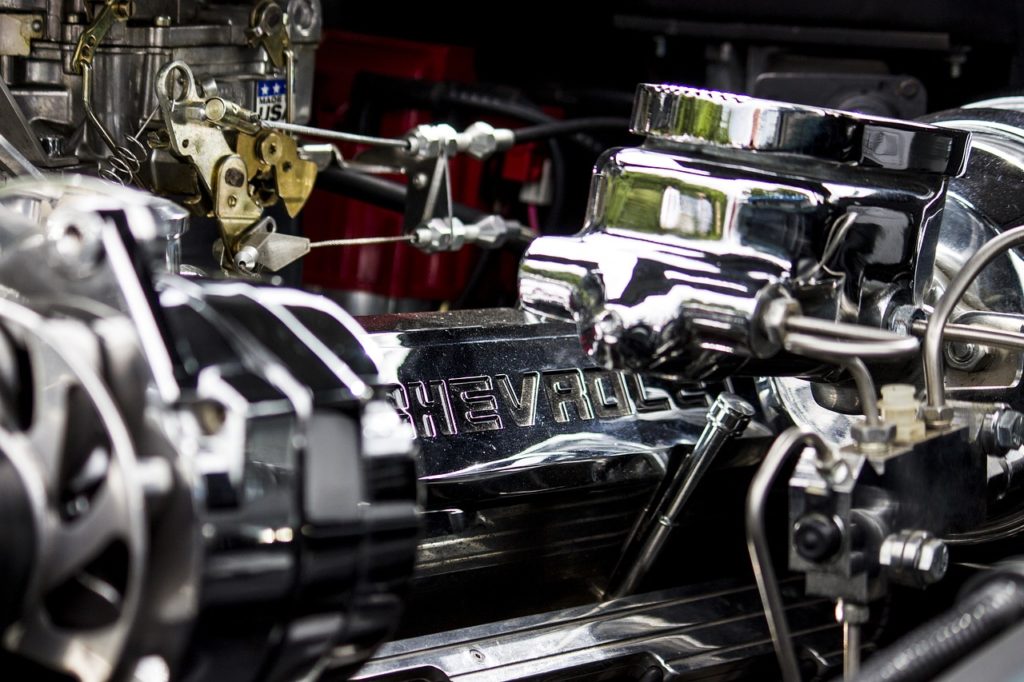
What Size Engine is an LS6?
An LS6 motor has a displacement of 5,665 ccs (345.7 cubic inches), with the cylinders configured in 90-degree V-8. So, it’s commonly referred to as a 5.7-liter engine. It has a cylinder bore of 99 mm (3.9 inches) and a stroke of 92 mm (3.62 inches).
LS6 Engine Maintenance
LS6 engines, and other variations within the LS engine series, enjoy a reputation as being pretty reliable. In different forms, they have seen service in quite a few vehicles and logged millions of miles on the road.
So, if you keep up with the basics of maintenance, it’s pretty likely your LS6 motor will run for a long time. So make sure to check and change the oil regularly and to keep an eye on your other fluids as well. Some general maintenance tasks include:
- Checking oil at each refueling
- Changing the oil and filter at appropriate intervals (that depends on what oil you’re using)
- Maintaining the coolant system and proper level of fluid
- Addressing any leaks immediately
The longer you drive any motor, the more likely it is to need a major repair. But when appropriately maintained, an LS6 should last a long time. Since it also enjoys a pretty robust secondhand market, it’s also possible to pick up parts or even complete motors pretty quickly at junkyards and other resellers. Some shops even specialize in rebuilding older LS motors for customers who want to swap a refreshed engine into their existing or new project car.
Sure, it’s possible you might have to change a rear main seal where it meets up with the transmission or deal with another headache, but the motor itself will probably run quite a long time. This is especially the case if it’s well cared for and you keep up with essential maintenance.
What Vehicles Have the LS6 Engine?
Many vehicles have an LS6 under the hood.
- C5 Corvettes from 2001 through 2004
- CTS-V Cadillacs from 2004 through 2005
- SSC Ultimate Aero TT 2007 (a mid-engined Shelby supercar)
There are also quite a few vehicles with other versions of the LS-series motor under the hood.
How Long Does an LS6 Engine Last?
It’s impossible to say how long a given engine will last. That’s because it’s impossible to know the whole story of any one engine. For instance, if you buy a used car and the previous owner abused it, the motor might fail prematurely.
And, some early LS6 motors (from 2001-2006 in the 5.3L configuration) suffered from a condition called ‘Castech Head’ failure. This condition is a problem with a cracked cylinder head that was limited to this model and forced GM to issue a Technical Service Bulletin (TSB) notifying owners and technicians of the matter.
This wasn’t a recall like there would be for a significant safety issue, but LS6 shoppers and enthusiasts should know that the motors with a ‘706’ casting number on the head (which is visible under the hood, just in front of the valve cover on the vehicle’s passenger side) may be overly prone to this failure.
How Much Does an LS6 Engine Cost?
If you go to a junkyard, you can likely find a well-used LS6 motor for less than $1,000. At that price, you’d probably have to do some work to rebuild or repair it, and it wouldn’t include the cost of removing it from whatever vehicle it’s in and putting it into your own. But that’s a lot of performance for a relatively low price.
If you step up and spend a little bit more money, you can find LS6 engines that have been removed from their old vehicles and prepared for sale for a few thousand dollars. If you’re willing to spend even more, the sky is the limit. Some custom shops and motor rebuilders offer rebuilt original motors with upgraded internals, and even racing-spec rebuilt LS6 motors that push much more horsepower than they did when they left the factory floor.
Just be prepared to crack open your piggy bank. It’s easy to spend more than $7,000 on that kind of motor. The sweet spot is probably someplace in the middle for most shoppers.
Where to Buy an LS6 Engine
Since the LS6 isn’t made by GM anymore, you’ll have to turn to the aftermarket. So junkyards are an excellent place to start. You can also try to find performance shops, engine rebuilders, or other mechanics who specialize in overhauling and reselling old LS6s.
Another option is to buy a vehicle with an LS6 already installed, especially if you are knowledgeable about engines and cars in general and LS6 setups in particular. Sometimes it makes more sense to strip the motor out of one car and put it into your own, rather than searching for an engine that’s already been removed from a vehicle.

